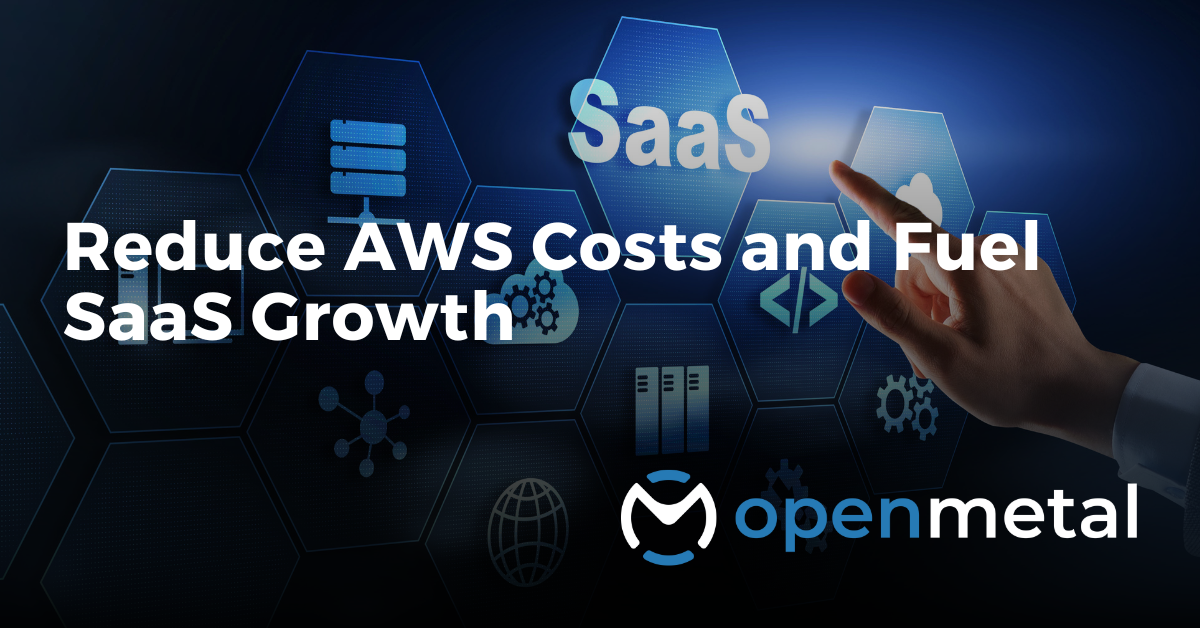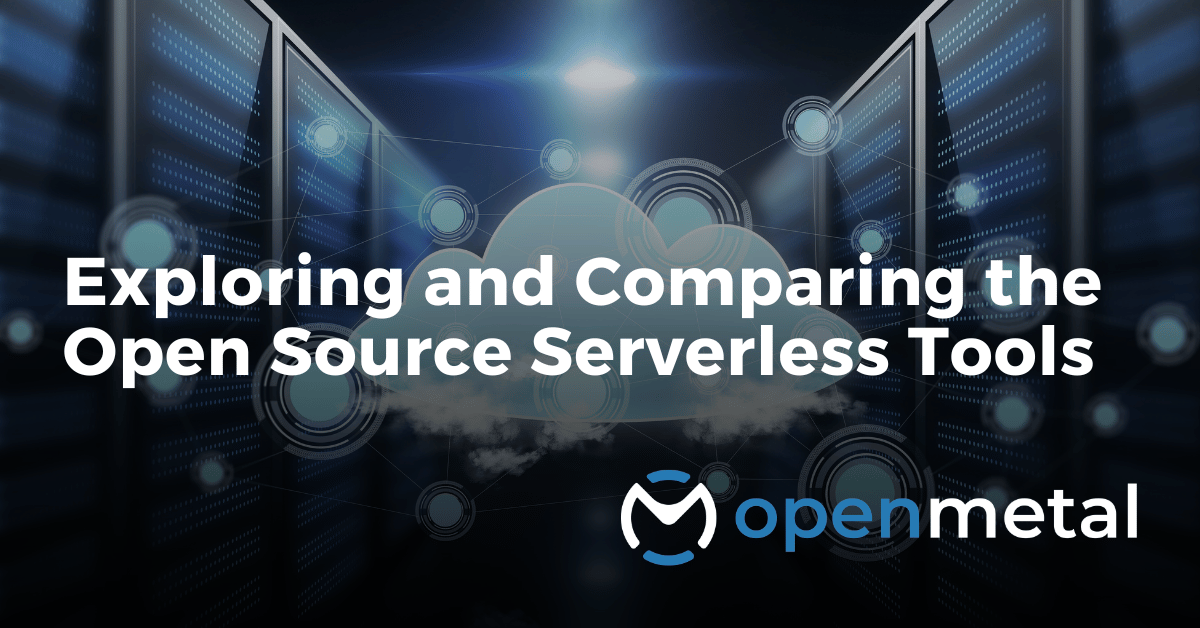Open Source Serverless Platforms: A Comparative Analysis
In the realm of serverless computing, open source platforms like OpenFaaS, Knative, Nuclio, and Apache OpenWhisk have garnered significant attention and adoption within the developer community. Their popularity can be gauged in part by their GitHub stars, a metric indicating the interest and support from the developer community. As of now, OpenFaaS leads with 23.7k stars, followed by Apache OpenWhisk with 6.5k stars, Knative with about 5.2k stars, and Nuclio closely behind at approximately 5k stars.
OpenFaaS – Leading with Community Support
Key Features:
- Ease of Use: Simplifies deploying functions to Kubernetes.
- Language Agnosticism: Supports functions in any language.
- Scalability: Efficiently scales functions with traffic.
- Strong Community: The high GitHub stars indicate robust community support and active development.
GitHub Stars: 23.7k
Creation: 2016
Best For: Developers seeking a widely-adopted, community-driven serverless solution with extensive language support and scalability.
Highlights: A trailblazer in the open source serverless arena, OpenFaaS quickly garnered attention for its simplicity and ease of use. Since its inception, it has developed a robust community.
Use Cases for OpenFaaS:
- Ease of Use and Rapid Deployment: OpenFaaS is renowned for its simplicity and ease of deployment, making it ideal for teams looking for a straightforward, user-friendly serverless experience. This is especially beneficial for projects that require quick turnaround times from development to deployment.
- Strong Community Support: With a large and active community, OpenFaaS is an excellent choice for projects that might benefit from extensive community support, contributions, and readily available resources. This is particularly valuable for open-source projects or those reliant on community-driven development.
- Integration with Existing Workflow Tools: OpenFaaS provides smooth integration with popular workflow and automation tools, making it a great choice for teams that want to incorporate serverless functions into their existing CI/CD pipelines and development workflows.
- Simplified Function Management: For projects where managing a large number of serverless functions is a priority, OpenFaaS offers a more simplified and manageable approach. Its UI and tooling make it easier to deploy, monitor, and scale a large number of functions.
- Portability Across Environments: OpenFaaS’s ability to run on any environment that supports Docker, including Kubernetes, makes it highly portable and versatile. This is beneficial for projects that require deployment across multiple environments or hybrid cloud setups.
- Language Agnosticism: OpenFaaS supports a wide range of programming languages, making it a suitable choice for projects that require the flexibility to develop functions in different languages without being constrained by the framework’s limitations.
- Customizable Auto-Scaling: Projects requiring customizable scaling behaviors can leverage OpenFaaS’s auto-scaling capabilities, which can be tuned to match specific workload patterns.
Compared to other serverless frameworks, OpenFaaS’s strengths lie in its simplicity, broad language support, strong community backing, and flexibility in deployment across various environments. These features make it a preferred choice for teams seeking an accessible, versatile, and community-supported serverless solution.
Apache OpenWhisk – A Solid Contender
Key Features:
- Event-Driven: Ideal for applications responding to a variety of events.
- Multi-Language Support: Extensive compatibility with numerous programming languages.
- Integration Capabilities: Offers numerous integrations with popular services.
- Flexible Function Composition: Supports both synchronous and asynchronous function execution.
GitHub Stars: 6.5k
General Availability: December 2016
Best For: Projects requiring diverse integrations and multi-language support, with a relatively strong community backing.
Highlights: Apache OpenWhisk positioned itself as a comprehensive, multi-language supported serverless platform. It has established itself as a solid contender with a significant following in the open-source community.
Use Cases for Apache OpenWhisk:
- Complex Event-Driven Applications: Apache OpenWhisk excels in handling complex event-driven architectures due to its comprehensive support for various event sources and triggers. This makes it ideal for applications that need to respond to a wide range of events, including database changes, user actions, IoT sensor data, or external webhooks.
- Multi-Language Support with Custom Runtime Flexibility: If your project requires support for a diverse set of programming languages or specific runtime environments, OpenWhisk’s extensive language support and ability to customize runtimes using Docker makes it a strong choice. This is particularly advantageous when compared to other platforms that might have more limited language support or less flexible runtime options.
- Integrations with a Wide Array of Services: OpenWhisk offers strong integration capabilities with a variety of external services and systems, making it suitable for scenarios that require extensive interactions with databases, messaging systems, and other cloud services. Its package-based approach to integrations can be more comprehensive than some other serverless platforms.
- Scalable API Backends with Rich Function Compositions: For projects that require building scalable API backends with sophisticated function compositions, OpenWhisk’s ability to chain actions together and support synchronous and asynchronous calls can be more advantageous than simpler, more linear execution models offered by some other serverless frameworks.
- Distributed, Scalable Data Processing: Apache OpenWhisk’s distributed nature and its ability to efficiently scale function executions make it well-suited for large-scale data processing tasks. This can include scenarios like processing streams of data in real-time or performing complex analytics operations, where the ability to scale out across a distributed environment is crucial.
Knative – Kubernetes-Focused Serverless Solution
Key Features:
- Enhanced Kubernetes: Adds serverless functionalities to Kubernetes.
- Event-Driven Architecture: Ideal for routing events in cloud-native applications.
- Auto-Scaling: Scales services as per demand.
- Cloud-Native Orientation: Tailored for applications built on Kubernetes.
GitHub Stars: 5.2k
Open Sourced: 2021
Best For: Kubernetes users seeking a serverless extension with a focus on event-driven architectures.
Highlights: Although a relative newcomer, Knative has made significant strides, especially among Kubernetes users. Its integration with Kubernetes and focus on event-driven architectures have made it a key player in cloud-native serverless solutions.
Use Cases for Knative:
- Kubernetes Native Applications: Knative is ideal for projects already invested in Kubernetes ecosystems. Its seamless integration with Kubernetes means that teams familiar with Kubernetes can easily adopt Knative without needing to learn a new platform.
- Event-Driven Architecture in Kubernetes Environments: For teams looking to implement an event-driven architecture within a Kubernetes environment, Knative’s eventing model provides a robust solution. It’s particularly effective for orchestrating and managing events across various sources and sinks within Kubernetes.
- Automated Scaling in Cloud-Native Applications: Knative excels in scenarios where automatic scaling of applications (scale-to-zero capabilities) is crucial. This is essential for optimizing resource usage and cost in cloud-native applications that experience variable traffic.
- CI/CD Pipelines in Kubernetes: For continuous integration and delivery pipelines that leverage Kubernetes, Knative can be a key component. It offers the ability to quickly deploy, update, and scale applications as part of an automated CI/CD process.
- Rapid Development of Microservices: Knative is beneficial for the rapid development and deployment of microservices, especially when these need to be scaled and managed efficiently. Its support for various development patterns and integrations makes it suitable for agile microservices development.
- Multi-Tenancy and Isolation: Knative can be more advantageous for scenarios requiring multi-tenancy and isolation within a Kubernetes cluster, due to its design and integration with Kubernetes’ native features.
Nuclio – High-Performance Serverless Framework
Key Features:
- Real-Time Performance: Supports a high rate of function invocations.
- GPU Support: Ideal for data-intensive applications requiring GPU resources.
- Rapid Deployment: Automates deployment from development tools like Jupyter notebooks.
- Versatile Deployment: Works across various environments, including edge and multi-cloud.
GitHub Stars: 5k
Release: December 2017
Best For: Data-driven applications needing real-time processing and GPU support, particularly in edge computing and data science domains.
Highlights: Nuclio entered the serverless scene a year after OpenFaaS and Apache OpenWhisk, focusing on high-performance serverless functions, particularly in data-intensive applications. Its emphasis on GPU support and real-time processing capabilities has made it a go-to choice for specific use cases.
Use Cases for Nuclio:
- Real-Time Analytics and AI: Nuclio is well-suited for processing various data and event streams, enriching them with historical or external data, and running AI prediction or classification logic. This is particularly useful for real-time insights or actions, such as IoT sensor data processing, customer or app event feeds, and image classification.
- Data Transformation and Movement: It can handle notifications from a data source, perform inspections, transformations, or replications to other data repositories using custom logic. This makes it ideal for tasks like creating thumbnails, data auditing, anonymization, backup, or synchronization.
- APIs, UI, and Bots: Nuclio can be used to rapidly develop backends for mobile or web applications, including user interfaces, dashboards, chatbots, or custom APIs and services for external consumers.
- IoT and Gateways: It’s applicable for running serverless functions on edge devices or gateways, allowing for local telemetry data collection and processing, or running local services that can be centrally controlled from the cloud.
Choosing A Winner
OpenFaaS
OpenFaaS (Open Functions as a Service) distinguishes itself as a leading serverless framework, particularly for its simplicity, versatility, and strong community support. It’s an ideal choice for teams seeking a serverless solution that is easy to deploy and manage, without compromising on flexibility and performance.
What sets OpenFaaS apart is its language-agnostic approach, allowing developers to write functions in any programming language they are comfortable with. This flexibility is a significant advantage in a diverse development environment. Additionally, OpenFaaS’s seamless integration with existing workflow tools and environments, including Kubernetes and Docker, ensures that it fits effortlessly into a variety of deployment scenarios, from on-premises to cloud and hybrid setups.
The framework’s simplicity is matched by its powerful performance capabilities. OpenFaaS offers efficient and customizable auto-scaling, ensuring that resources are optimally used and costs are kept in check. This makes it suitable for a wide range of applications, from small-scale projects to enterprise-level implementations.
Moreover, OpenFaaS boasts a vibrant and supportive community, which continuously contributes to its development, making it a continually evolving and improving platform. The active community also means access to a wealth of knowledge, resources, and support, which is invaluable for both new and experienced users.
In conclusion, OpenFaaS stands out as a comprehensive, user-friendly, and robust serverless framework, making it a top choice for developers and organizations looking to leverage the power of serverless computing.
Next Article Preview: Getting Started with OpenFaaS
In our upcoming article, we’ll take a deep dive into the world of OpenFaaS, guiding you through the essentials of getting started with this powerful serverless platform. Whether you’re new to serverless computing or looking to expand your toolkit, this article will provide a comprehensive walkthrough of OpenFaaS, covering everything from initial setup to deploying your first function.
What to Expect:
- Installation and Configuration: Step-by-step instructions on setting up OpenFaaS in your preferred environment, whether it’s local, cloud-based, or a hybrid setup.
- Developing with OpenFaaS: Insights into writing and deploying functions in various programming languages supported by OpenFaaS.
- Leveraging OpenFaaS Features: A look at OpenFaaS’s unique features, including its UI, CLI tools, and auto-scaling capabilities.
- Best Practices: Tips and tricks for efficient development and deployment practices in OpenFaaS.
- Real-World Examples: Practical examples and use cases to illustrate how OpenFaaS can be applied in different scenarios.
Stay tuned for this informative guide that will equip you with the knowledge and skills to harness the full potential of OpenFaaS in your serverless journey.
Keep an eye on our OpenMetal Blog for this upcoming article and more insights into the evolving world of cloud computing and serverless architectures.
More on the OpenMetal Blog…

Reduce AWS Costs and Fuel SaaS Growth
When SaaS providers consume large amounts of public cloud, a move to a hosted private cloud may reduce current AWS costs up to 50%. This can…Read More

Alternative Clouds Blurring The Lines Between Public and Private Clouds
Learn about alternative cloud solutions that combine the best of both public and private clouds and give your business greater flexibility…Read More

Public Cloud Waste at 28%: Time to Consider On-Demand Private Cloud as an Alternative?
The 2023 State of Cloud report by Flexera includes a statistic about annual public cloud waste being at 28%. According… Read More





































